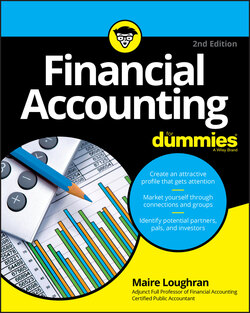Читать книгу Financial Accounting For Dummies - Maire Loughran - Страница 74
Improving cash flow
ОглавлениеEarlier in this chapter in the “Managing Cash” section, I emphasize the need to keep a handle on cash because having inadequate cash flow is the No. 1 reason why new businesses fail. You walked through Izzie Tees and Jeans Cash Budget and found that Izzie had a $10,872 cash shortfall as of the end of February.
Some quick suggestions were for Izzie to put off unnecessary purchases and try to extend terms for purchases she had made on account. On account simply means the vendor has shipped inventory to Izzie with a promise from Izzie to pay for it within a certain time frame. I want to delve into the topic of short-term debt (see Chapter 8).
It’s quite common in the business world to occasionally have a situation where you have to make payroll, and there just isn’t enough money in the business checking account to cover it. This sounds bad at face value, but there are some less than dire reasons for this to happen.
Accounts receivable is a biggie. Maybe you have a substantial customer that buys on credit. Based on your business relationship going back years, you know they will honor their commitment to send payment in the next 15 days. The cash implications are not a big deal.
Or the company may be in the business of manufacturing a seasonal item, such as patio furniture. Past performance has shown that 75 percent of sales take place in April through August. However, it is more efficient to manufacture the patio furniture year-round.
To finance the increase in patio furniture inventory, the company decides to take on short-term debt. The two most prevalent types of short-term debt (well, besides a loan from Mom!) are working capital loans and revolving lines of credit.
Working capital loans: This type of loan is made with the expectation that it will be paid back in the short term from sales and collections of accounts receivable. Short term means within 12 months. My students are usually surprised by the effect that working capital loans have on ratio analysis (see Chapter 14). Because cash and working capital loans are both current there is no effect on the current ratio. The addition to cash, a current asset, is cancelled out by the increase in working capital loans, which is a current liability.
Revolving line of credit: This source of cash is a maximum amount set by the lending institution, which the business uses at its discretion. Based on the terms, there is usually a requirement to make periodic payments once the funds are accessed.
Finally, keep in mind that there is no free lunch! Interest expense is a cost associated with the use of short-term debt —unless of course, the company lucks into an interest-free loan. Even those loans have a cost as the origination fee is generally anywhere from 3 to 5 percent of the loan amount.
